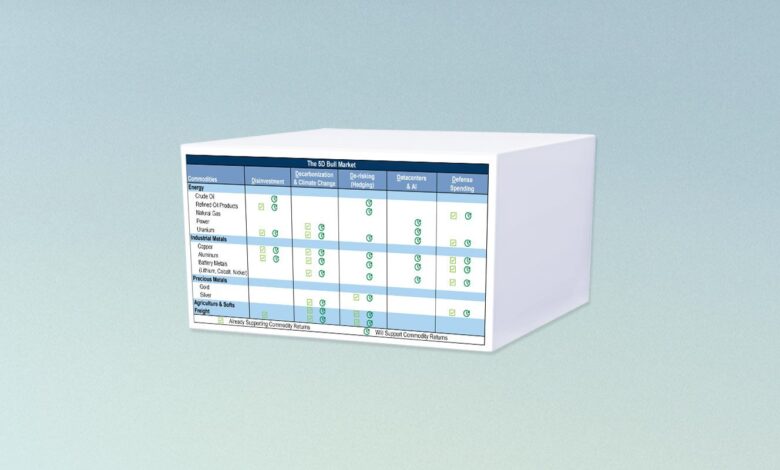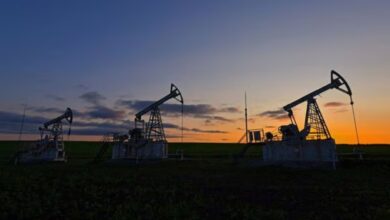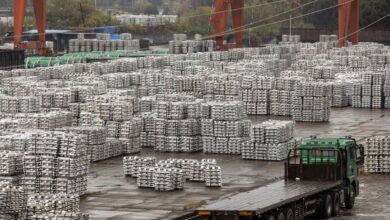Goldman Sachs says we’re in a “5D bull market”

Commodities
have been on the rise, and likely will be for a while. Goldman Sachs sees the rally being driven by five key trends – which they neatly refer to as the “Five Ds”. Let’s take a look.

Five key trends that are expected to support commodity prices over the next few years. Source: Goldman Sachs.
1) Disinvestment.
Years of weak returns, rising costs from environmental pressures, uncertain long-term demand, and a shift to shorter-term projects have slammed the brakes on investments in
commodity
production. This pullback has pinched supply, particularly in fields that can’t turn on a dime, like copper and aluminum mining, and oil refining and transportation.
2) Decarbonization and climate change.
Goldman analysts estimate that the big decarbonization goal – hitting net zero by 2050 – will require a yearly green infrastructure investment of about 2% of global economic output. And that will include ramping up the production of electric vehicles, which of course will supercharge demand for the metals they use in abundance. At the same time, extreme weather patterns caused by climate change are likely to push up agricultural prices by disrupting supply.
3) De-risking (or hedging).
Global disruption has been the planet’s middle name lately. So it’s no wonder policymakers, companies, and investors increasingly want to shield their supply chains and portfolios from geopolitical risks. This protective shift is already boosting demand for strategic commodities like gold. The movement to bolster strategic reserves of commodities such as crude oil and critical minerals, along with a stronger emphasis on supply chain security, is also driving demand across various industries, from tech to green initiatives to manufacturing.
4) Data centers and AI.
The AI boom could pump up commodity prices in three ways. First, the surging demand for data centers is cranking up the need for electrical power, which may spark a rise in the use of natural gas and essential metals like copper and uranium. Second, as the economy grows and incomes rise, overall commodity demand may get a lift. Third,
productivity
improvements outside the sector could mean less capital available for commodity investments, which could tighten supplies. But there’s a caveat here: AI could also lower commodity prices by improving efficiency within the sector.
5) Defense spending.
Global military spending soared in 2023, equalling 2.3% of the total global economy. In the US, defense spending flew past expectations, jumping 9% from the year before, well more than the forecasted 2%. With ongoing geopolitical uncertainties and the West’s commitment to spend more on defense, that number could climb even higher. Key commodities used in the defense sector include distillate fuels, copper, aluminum, steel, silver, uranium, and various strategic minerals.





